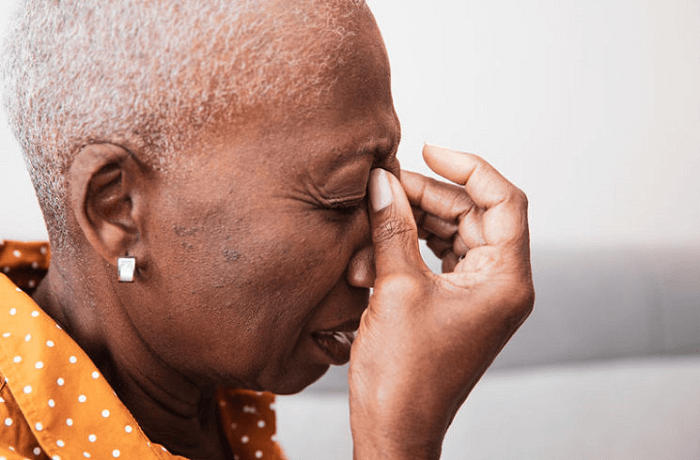Sinus DefinitionSinuses are cavities in the skull found in the front of the face, close to the eyes and nose. The skull is made lighter because of these cavities. Additionally, they create mucus, which moisturizes the nasal passages. The mucus is a barrier to eliminate unwanted substances, including dirt, contaminants, and infectious agents. Cilia are very small, hair-like cells that line the sinuses. The cilia assist in draining mucus through the spaces of the sinuses and out into the nose. 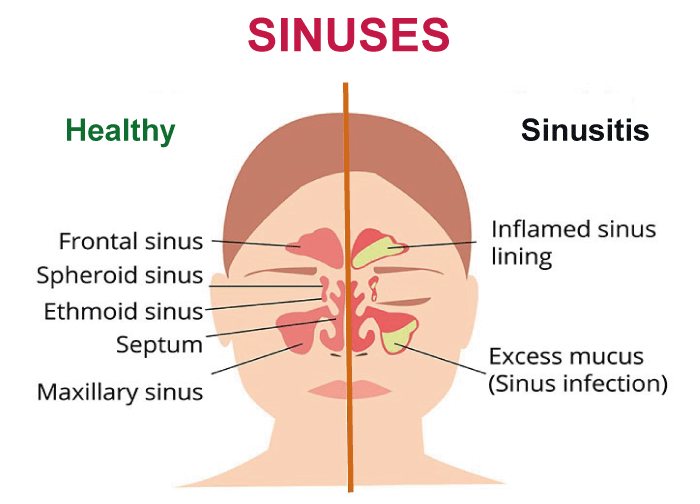
Sinus infection and sinusitis have the same definition. The term "sinus" refers to the area of swelling on your face, while the word "itis" indicates inflammation or swelling frequently brought due to an infection. Sinuses are usually air-filled cavities in the face's bone. SinusesFour paired spaces (cavities) in the head are the sinuses. Narrow passageways connect them. The mucus produced by your sinuses drains through the nasal passages. This drainage helps maintain a healthy nose free of bacteria, allergies, and other pathogens. SinusitisAn inflammation of the sinuses is known as sinusitis. It frequently results from a bacterial (germ) infection. It is sometimes brought on by viruses and fungi (molds). Bacterial or fungal sinus infections are more common in those with weakened immune systems. 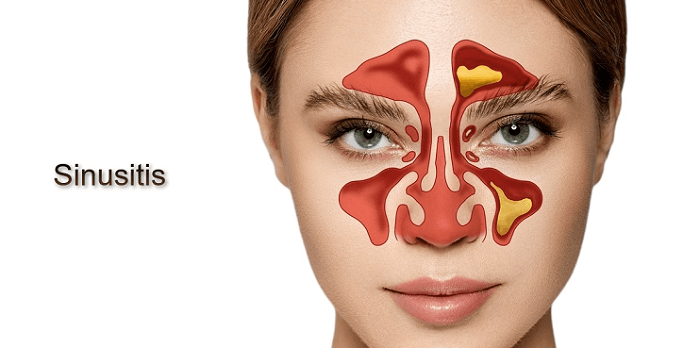
Some individuals with allergies may experience "allergic fungal sinus infection." The duration of an acute sinus infection is three to eight weeks. Chronic sinusitis is defined as an infection that lasts longer than eight weeks. The cavities in the sinuses are air-filled. They are found:
A sinus cavity infection near the brain may be dangerous if left untreated. Rarely, it may spread to the brain. Normal sinuses are covered with a thin mucus layer that collects dust, bacteria, and other airborne contaminants. Tiny hair-like extensions in the sinuses move the mucus (and everything stuck in it) toward the passage connecting with the throat's back. The stomach is reached afterward by a downward slide. This ongoing procedure is a normal body function. The normal drainage of mucus from the sinuses into the back of the throat is stopped by a sinus infection. When allergies or infections cause the tiny nasal tissues to swell, the hair-like "sweepers" become blocked. The mucus is trapped in the sinuses by the swelling. Some people have medical conditions that make them more vulnerable to sinus infections. The most widespread of these conditions are:
Chronic sinus infections are a common illness for people with these defects. Sinus Infection SymptomsA sinus infection is often mistaken for a nasty (bad) cold. Many symptoms are the same, such as facial pain, runny nose, and congestion in the nose. The symptoms of a sinus infection, as opposed to a cold, may be brought on by bacterial infections. 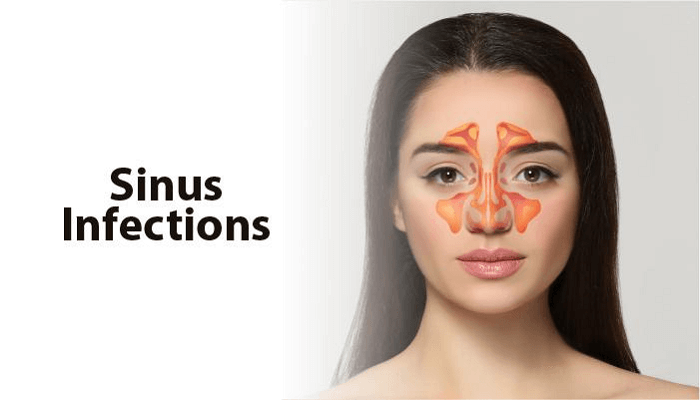
Antibiotics (which kill the pathogens responsible for the infection) are frequently needed for treatment. The following are typical sinus infection symptoms:
Rhinitis (a medical word used to denote nasal inflammation and irritation symptoms) is sometimes confused with a sinus infection (sinusitis). Only the nasal passages are affected by rhinitis. Allergies can significantly influence chronic (long-lasting) or seasonal rhinitis occurrences. In an attempt to wash out the irritating inhaled particles that cause allergies, nasal and sinus pathways swell, congest, and become inflamed. Seasonal allergies include pollen. Symptoms can be brought on throughout the year by molds, dust mites, and pet dander. Chronic sinus infections and asthma are linked to one another. Some individuals suffering from chronic nasal irritation, inflammation, and asthma may get a type of chronic sinusitis not caused by infection. Often, asthma symptoms get better with proper sinus infection treatment. What Causes Sinusitis?The common cause of sinusitis is the flu or cold virus that has traveled from the upper airways to the sinuses. A bacterial invasion brings on a few cases of sinus infections. The sinuses can occasionally become inflamed due to an infected tooth or a fungus infection. 
Although the exact cause of chronic (long-lasting) sinusitis is not clear, it has been related to:
For infants and young children, attending daycare, using pacifiers, or drinking bottles while lying down may raise the risk of developing sinusitis. At the same time, smoking may increase the risk of developing sinus infections in adults. 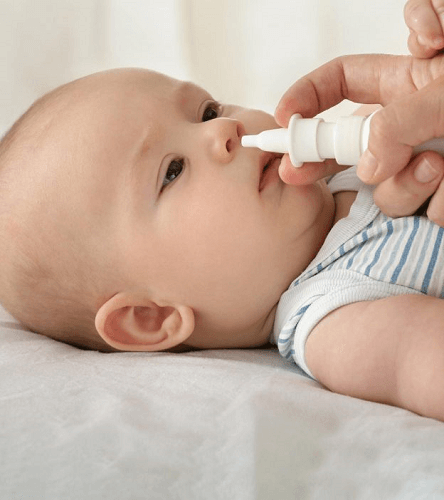
Sinus Infection DiagnosisVisit the allergist for a proper diagnosis for those who believe they have a sinus infection. Treatment for sinus infections is usually simple. Early sinus infection treatment allows one to avoid more serious complications and symptoms. A physician can make a diagnosis by:
The doctor may use a light source or an otoscope (a small, handheld device with a light attached) for visually examining the nasal cavity. The equipment can also be used for examining the ears. If symptoms continue, a person may require a more thorough examination from an ear, nose, and throat specialist. What Is a Sinus Surgery?Sinus surgery tries to clear blockages and widen the sinus's passageways. This is a treatment option for those who experience chronic and recurrent sinus infections, abnormal sinus anatomy, or abnormal growths in the sinus. A doctor will frequently try various therapies and techniques before performing surgery. Surgery might be performed if these are unsuccessful. There is little pain associated with undergoing sinus surgery. The treatment is simple and quick, with little difficulties. How dangerous is sinus surgery?
Treatment
Antibiotics Bacterial sinus infections are often treated with antibiotics. Typically, antibiotics are used for 3 to 28 days, based on the type. Longer therapies may be recommended for patients with more serious or long-lasting cases since the sinuses are deeply rooted in the bones, and their blood supply is limited. Antibiotic resistance has been dramatically rising due to antibiotic overuse and abuse. Therefore, patients with sinus symptoms should only consider taking an antibiotic if symptoms (including discolored nasal discharge) continue for more than 7 to 10 days. Antibiotics help treat sinus infections by fighting the germs that cause them, but they do little to relieve symptoms until the medication starts to work. Some over-the-counter medicines can offer some relief. Nasal decongestant sprays Topical nasal decongestants can be beneficial if used for no longer than three to four days. These drugs reduce clogged nasal passages, allowing sinus drainage to flow more easily. A condition known as the rebound phenomenon, which causes nasal passages to swell shut, can be brought on by excessive use of topical nasal decongestants. Antihistamines and nasal decongestants Antihistamines reduce allergy symptoms, including swelling of the nose and sinus passages, by preventing the inflammatory reactions that cause allergies to occur. Precautions should be taken when using over-the-counter combination medications. Some of these medications have drying elements that can make mucus thicker. Use these only as directed by the allergist. Topical nasal corticosteroids These prescription nasal sprays address the most significant issue connected to a sinus infection, which prevents and reverses swelling and inflammation in the nasal passages and sinus apertures. Nasal polyps can be reduced and kept from coming back with the help of topical nasal corticosteroid sprays. These sprays do not enter the bloodstream and can be used repeatedly without creating an "addiction" when used as directed. Nasal saline washes The nasal passageways can be cleaned of thicker secretions with the help of nasal rinses. Surgery Surgery may be suggested as a last option if medical treatments have failed. An otolaryngologist generally performs it. The majority of surgeries are performed to correct anatomical defects. A surgeon can repair the nasal passages if nasal polyps can be removed, closed passageways can open, and flaws in the bone that separates the nasal passages. Patients can frequently return home the same day after sinus surgery, done under local or general anesthesia. Alternatives to surgery A doctor will try several alternative treatments before turning to surgery. There is a variety of medications that can be given in addition to additional treatments that may improve symptoms. These other treatments include:
Next TopicSkeleton Definition
|
 For Videos Join Our Youtube Channel: Join Now
For Videos Join Our Youtube Channel: Join Now
Feedback
- Send your Feedback to [email protected]
Help Others, Please Share





